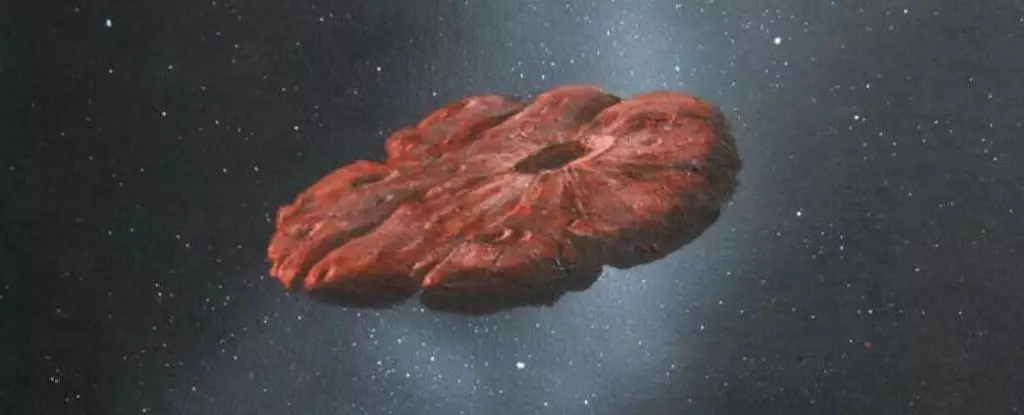In late 2017, the universe threw a thrilling surprise our way with the appearance of ‘Oumuamua, an enigmatic space object speeding through our Solar System. This dazzling visitor, measuring approximately 400 meters in length and ten times that in width, captivated astronomers worldwide. The name ‘Oumuamua comes from Hawaiian, meaning “scout,” which seems fitting, given that it was the first recorded object from outside our star system. What makes ‘Oumuamua particularly intriguing is that scientists believe it had been wandering through the Milky Way for potentially hundreds of millions of years before it found its way into our cosmic neighborhood. This planetary vagabond, like others of its kind, is believed to be debris ejected from its original star system, a remnant of cataclysmic events.
In 2019, the Borisov comet entered our midst, marking a second confirmed interstellar object (ISO). This sparked a flurry of interest in ISOs and their potential revelations about the galaxies beyond our own. But with so many ISOs estimated to exist—around ten septillion—turning our gaze specifically toward these celestial travelers raises intriguing questions.
The Challenge of Detection and Tracking
While researchers estimate that vast numbers of interstellar objects are scattered throughout the Milky Way, the actual detection of these wild cosmic rovers is challenging. The urgency lies in their swift travel; ‘Oumuamua zipped past Earth at an astonishing 32.14 km/s, allowing astronomers less than a year to mobilize any space mission after observing one. The combined limitations of current telescopic technology and the inherent velocity of these ISOs mean that we often only observe them after they have vanished into the void beyond.
The conundrum of predicting their arrival is compounded by the characteristics of larger ISOs. It seems that most of our observations come long after these interstellar visitors have gone, leaving an enormous gap in our understanding of their composition and origins. The need for innovative strategies to observe these beings before they dart past our eyes has never been more pressing.
Innovative Approaches to Space Exploration
Fortunately, advancements in technology may soon transform our ability to study these fleeting phenomena. Current proposals like NASA’s Bridge mission and ESA’s Comet Interceptor represent the first steps toward more active engagement with ISOs. These missions aim to deploy spacecraft ready for rapid interception, demonstrating the potential to revolutionize our approach to depth observation and analysis of these objects.
Bridge plans to launch a space vehicle on a trajectory to intersect an incoming ISO as soon as it’s detected. Meanwhile, Comet Interceptor will sit idly in a storage orbit, awaiting an eligible comet or ISO for close examination. This position enhances its prospects of capturing data from dynamic events that occur intermittently.
The necessity to adapt to high speeds highlights another layer of complexity in our pursuit of ISOs. Speed is fundamental for successful interception, but current propulsion technologies prove to be limiting. A greater emphasis on artificial intelligence (AI) and machine learning could streamline our response to incoming objects, allowing spacecraft to adjust their courses in real time based on advanced predictive algorithms.
The Role of Propulsion Innovations
Innovations in propulsion technologies are crucial to the viability of future missions. The emerging concept of solar sails, which harness solar radiation for propulsion, represents an exciting alternative to traditional fuel methods. These sails lessen the burden of heavy tanks, significantly optimizing the mass and speed capabilities of spacecraft. Further advancements, such as laser propulsion, promise to catapult these crafts to unprecedented velocities, thus enhancing our chances of catching up with fast-moving ISOs.
However, challenges abound when it comes to the interaction between spacecraft and the hostile environments of ISOs. Robust materials and protective shielding are non-negotiable, given the potential for high temperatures and erosion from exhaling dust. Current research ventures into advanced composites and innovative uses of familiar materials could lead to the development of lighter, more resilient spacecraft.
Collaborative Research and the Scientific Frontier
The intersection of terrestrial observatories and space missions is imperative for bolstering the field’s growth. Instruments like the James Webb Space Telescope could provide critical insights, yet funding cuts pose a significant threat to our aspirations in space exploration. A rigorous commitment to fostering new technologies remains crucial for ensuring that the pursuit of interstellar objects does not fall victim to bureaucratic stagnation.
The intertwined nature of AI, predictive modeling, and innovative propulsion systems could forge a future where ISOs are no longer cosmic mysteries observed from afar but rather subjects to be engaged with, learned from, and understood. As we stand on the cusp of a new era in space exploration, the opportunities ahead beckon us to dream bigger and push the boundaries of our scientific endeavors.

